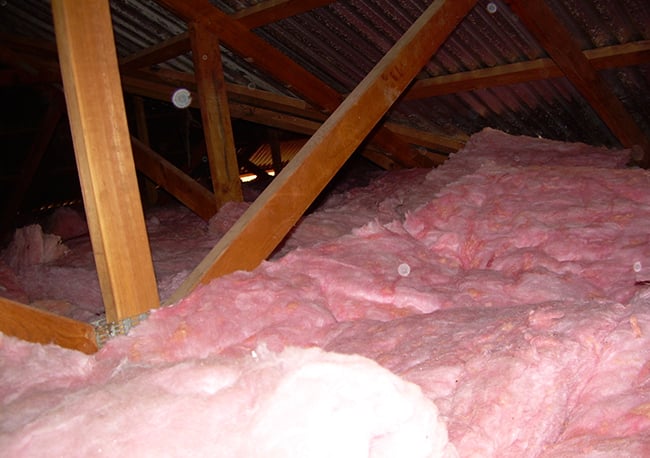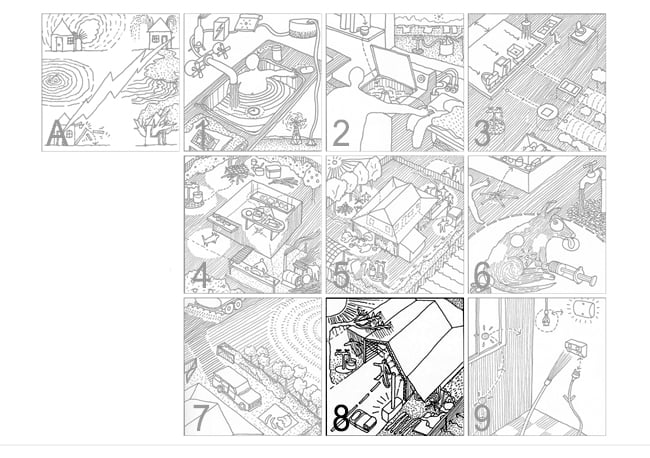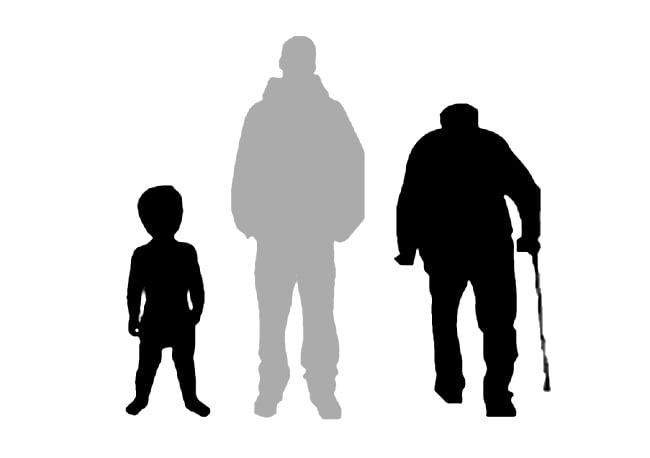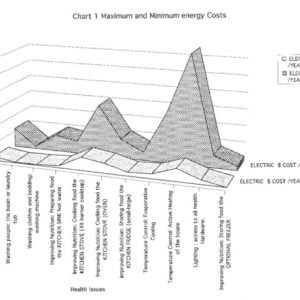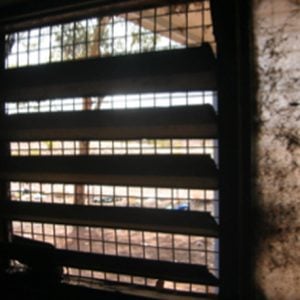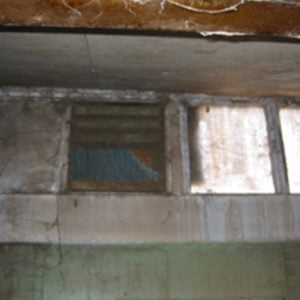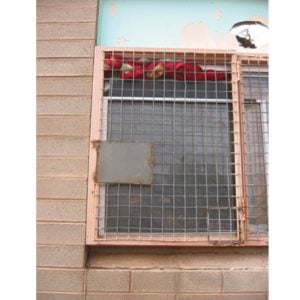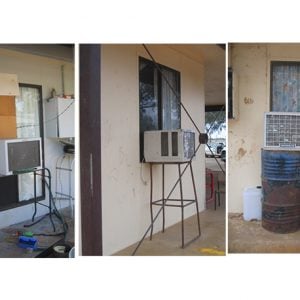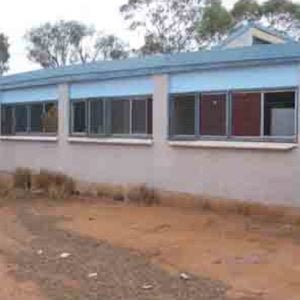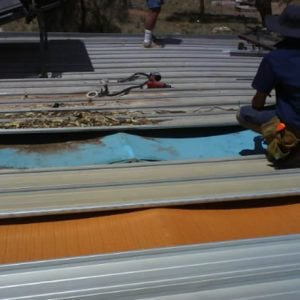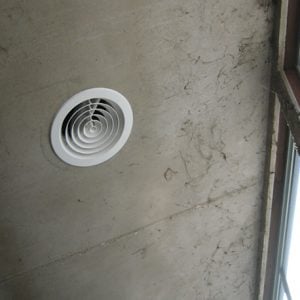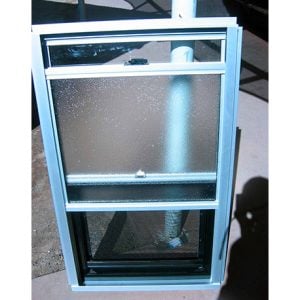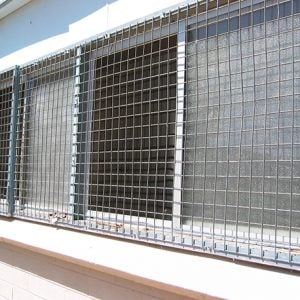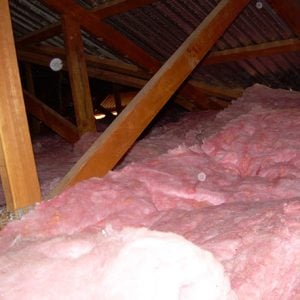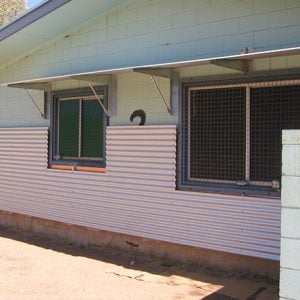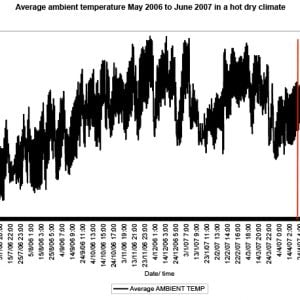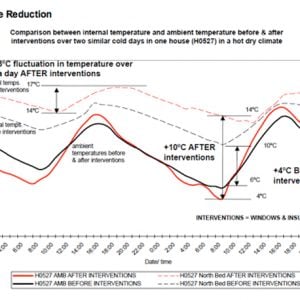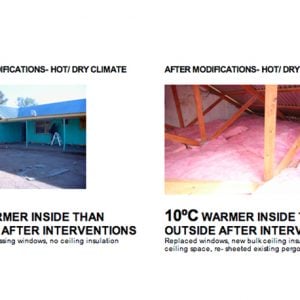Research and Development
Temperature Control Inside the House – warm houses in cold climates
Project Details Better Indoor Living - Temperature Control
- Introduction
- The Problem
- The Solution
- Trial projects
- Where to next?
- From Housing for Health - the Guide
Introduction
In cold climates, it can often be colder inside the house than outside in a sunny, wind protected place in the yard. Extremes in temperature inside houses can impact on the health of people.
People compensate for temperature extremes by installing air conditioning. In remote areas air conditioning can cost as much as $25/day in summer. As part of the project existing houses were modified in a range of climates, to make them warmer in winter and cooler in summer. The aim was to reduce the reliance of active heating (and cooling) by reducing the number of days in the year air conditioning is required.
See “Temperature Control Inside the House- Cool houses in hot climates” for thermal stress experienced due to hot temperatures.
The Problem
In cold climates, it can often be colder inside the house than outside in a sunny, wind protected place in the yard.
| Average outside air temperature in cold conditions when temperatures are less than 15ºC | 14ºC |
| Average temperature inside the house in cold conditions when outside temperatures are less than 15ºC | 17ºC |
| 5% of over 7000 houses surveyed had outdoor temperature less than 15ºC at time of survey. 15% of these houses provided no improvement on the outside air temperature |
*data from Housing for Health the guide – B8 Controlling the temperature of the living environment
Reliance on expensive to run heating (and cooling) systems
When houses are too hot or too cold, with poor passive design, householders are often forced to buy active heating and cooling to make the house habitable. Passive heating and cooling is any heating or cooling method that requires no energy input either by the house resident or a mechanical device.
Active heating and cooling involves the input of energy to the house. Ideally all active systems are as energy and water efficient as possible.
Heating and cooling systems can often be cheap to buy but very expensive to run. In a house, heating and cooling can account for a high proportion of the household’s total energy use.
See graph of energy use in an existing house on the Anangu Pitjantjatjara Lands below.
When heating becomes unaffordable, it can sometimes lead to disconnection of the power source (eg. electricity or gas service).
The householders then do not have electricity or gas available to perform the nine healthy living practices*. For example, power to heat hot water to wash people or power for fridges, stove and ovens.
*https://www.healthabitat.com/what-we-do/safety-and-the-9-healthy-living-practices
Reasons houses are too cold*:
- Poor orientation – The house is not sited to be protected from hot summer sun or hot breezes or to allow the sun in the cold winter months
- No wall or roof insulation – (26% had wall insulation, 37% had roof insulation)*
- Lack of windbreak planting – (27% had windbreak planting)
- Damaged or missing windows – (33% had all windows OK)
- Verandahs on 3 or 4 sides of the house – (3 sides- 10% of houses, 4 sides- 9% of houses)
- No heating system installed – (56% of houses had no heating system installed)
(NOTE: “active cooling and heating” should only be supplementary to “passive heating and cooling” measures or it is not affordable for occupants to run)
For more information on reasons for houses being too cold see Your Home website http://www.yourhome.gov.au/
The Solution
Modifications have been made to existing houses to make them warmer in winter and cooler in summer.
Passive* modifications made to houses to make them warmer in cold climates include:
- New windows
- Shade walls to shade uninsulated walls in summer or prevent heat loss from inside in winter
- Roof insulation
- Roof vents to exhaust hot air from ceiling spaces in summer which can be closed to prevent escape of warm air in winter
* Passive heating and cooling is any heating or cooling method that requires no energy input either by the house resident or a mechanical device.
Only after passive modifications are made to houses should active modifications be considered if required. Otherwise the running costs of the active system will be unaffordable for residents. Active heating and cooling involves the input of energy to the house. Ideally all active systems are as energy and water efficient as possible. There were no active modifications made to houses as part of these projects
Trial projects
Temperature control project – Hot/dry climate – winter
Project Aim
To make houses warmer in winter and cooler in summer, in climates where people experience thermal stress due to extremes in temperature.
To consider low maintenance passive temperature control measures and to reduce long term running costs of active temperature control.
Project Outline
To produce a kit of parts able to be used on many houses to reduce extremes in internal temperature for minimal cost. The designed parts can be used on existing houses and integrated more fully into new house designs.
Project Implementation
Data measuring equipment was installed in a selection of houses. The houses had varying construction types. Ambient (shaded external air temperature) and internal room temperature were recorded before and after modifications were made to houses.
Modification to houses
Passive* modifications made to houses to make them warmer in winter included:
- New windows
- Shade walls to shade uninsulated walls in summer or prevent heat loss from inside in winter
- Roof insulation
- Roof vents to exhaust hot air from ceiling spaces in summer which can be closed to prevent escape of warm air in winter
* Passive heating and cooling is any heating or cooling method that requires no energy input either by the house resident or a mechanical device
Cost/house (as at 2007 in Alice Springs, Central Australia)
New windows = $15 000/ house (average to supply and install)
New insulation = $3000/ house for installing bulk insulation on top of existing flat ceiling space or $13 000/ house to install new air cell insulation and new metal roof sheeting
(All costs are in $AUD)
(Cost of other modifications are detailed in “Cool houses in warm climates section”)
Where to next?
For information for architects, designers, students, communities, housing managers go to :
B8 Controlling the temperature of the living environment
B8.1 Human comfort and climate
B8.3 Passive design for houses in arid and temperate climates
From Housing for Health - the Guide
B8.3 Passive design for houses in arid and temperate climates
In arid and temperate climates, houses must remain cool in the extremely hot summers and warm in cold winters. The air temperature is often hotter than in tropical climates, and there is little relief provided by rain or breezes during the day, so people tend to shut up their houses against the extreme outside temperatures. People may also use a shady outdoor place that is sheltered from hot, dry winds during the day.
Cooler nights in arid climates and cool changes in temperate zones can provide an opportunity to cool the building fabric and flush hot air from the house. A good passive design strategy in summer in these regions is to shade and insulate the house against the heat of the day and flush out any stored heat during the cooler nights.
Learn More

